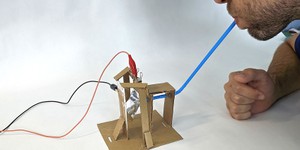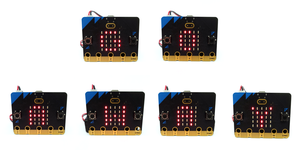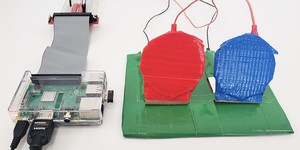Reduced Inequalities Science Projects (12 results)
The United Nations Sustainable Development Goals (UNSDGs) are a blueprint to achieve a better and more sustainable future for all.
These projects explore topics key to Reduced Inequalities: Reduce inequality within and among countries.
These projects explore topics key to Reduced Inequalities: Reduce inequality within and among countries.
|
Select a resource
Coding Projects
Sort by
|
Many individuals who are blind or visually impaired use canes to navigate their surroundings, using their sense of touch to detect obstacles. What if you could create an electronic cane that emits an audible warning before coming into contact with an object? This project allows you to do just that by incorporating an ultrasonic distance sensor and a buzzer to alert the user of approaching obstacles. You can customize the cane by adding additional features or altering the design, such as using a…
Read more
Many visually impaired people use canes to detect obstacles at ground level. What about detecting an obstacle at face level, like a tree branch? What if you need to keep both your hands free and cannot hold a cane? Solve both problems at once with these obstacle-detecting glasses! The glasses use an ultrasonic sensor to measure distance and a buzzer to alert the user of nearby objects. You can customize the design to add or swap out features, like using a vibration motor instead of a buzzer.…
Read more
New
Can AI understand human language? In the future, AI could aid in emergency interpretive service in the hospital when translators aren't available. But can current AI algorithms understand non-verbal languages like sign language? In this science project, you will test whether AI can learn sign language gestures or phrases to see if it can be used for interpretation.
Read more
We take it for granted that computer screens can update the text on their displays. What about braille, the writing system used by blind and visually impaired people? Braille writing usually consists of a series of permanently raised bumps on a surface like a piece of paper or a sign. How can you make these bumps change or "update" to display different text? Find out in this engineering project as you design and build your own refreshable braille display.
Read more
Do you know anyone who is colorblind, or are you colorblind yourself? What if you could carry a device in your pocket that could identify colors for you? Many people already carry around the device they need to do this - a smartphone! Since phones have built-in cameras, you can make an app that uses the camera to identify colors. In this project you will use a program called MIT App Inventor that makes it easy for anyone, even with no programming experience, to design your own mobile app.
Read more
Have you ever wondered how you could push a button without using your hands? How would you type on a computer or play a video game? You could use a puff switch - an electronic switch activated by blowing into a straw. This type of assistive device can help users with limited mobility or physical disabilities do everything from using a computer to steering a wheelchair. In this project, you will design, build, and test a puff switch that is connected to a tiny programmable board that you can use…
Read more
New
Have you ever seen a waiter balance an entire tray of drinks without spilling any? How do they do it? Do you think you could build a robot waiter that can do the same thing? In this project, you will learn how to build a self-balancing robotic tray. You can incorporate the auto-leveling tray into one of our many other robotics projects, like the Bluebot or robotic arm.
Read more
Do people treat someone differently based on his or her appearance? Specifically, how are their behaviors affected by the clothes a person wears? For instance, if somebody wears a formal suit, do you think others behave differently when interacting with that person compared to if he or she were wearing casual clothes, like blue jeans? In this science project, you will get to try and find out!
Read more
Do you enjoy playing video games? Do you like the challenge of reaching a difficult game level and scoring lots of points? Video games include many graphic elements that are great to watch, but did you know that not only sighted people enjoy video games? Blind and visually impaired players can also play video games by relying on sound cues — the pings, pops, bangs, and bursts of music that make a game fun or exciting. When building a game that will be accessible to differently abled…
Read more
Have you ever tried to communicate with a baby or toddler who cannot talk yet? What about another kid or an adult who cannot speak due to a medical condition? There are many ways we can communicate without speaking, like writing or using sign language. We can also use technology to help make it easier to communicate. In this project you will program your own communication aid to help someone who cannot speak show their emotions or simple messages.
Read more
People with limited mobility, especially in their hands, may not be able to use traditional video game controllers. Adaptive game controllers use a variety of peripherals, like larger buttons, foot pedals, or specialized joysticks, to let people with limited mobility play video games. This video shows how to build a very simple adaptive controller that works with Scratch games on a Raspberry Pi. Can you build an adaptive game controller for a hardware platform and game of your choice?
Read more
How could you send a text message without using your thumbs? What about typing on a keyboard or using a video game controller without using your fingers? Due to a variety of medical conditions like cerebral palsy or paralysis from an accident, some people might be unable to easily use their hands and fingers to push small buttons or use joysticks. However, they might be able to use their entire hand to push a single larger button or use another part of their body like their foot or even their…
Read more
|

















